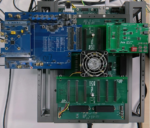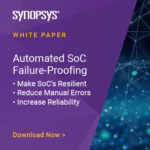You are currently viewing SemiWiki as a guest which gives you limited access to the site. To view blog comments and experience other SemiWiki features you must be a registered member. Registration is fast, simple, and absolutely free so please,
join our community today!
WP_Term Object
(
[term_id] => 157
[name] => EDA
[slug] => eda
[term_group] => 0
[term_taxonomy_id] => 157
[taxonomy] => category
[description] => Electronic Design Automation
[parent] => 0
[count] => 4357
[filter] => raw
[cat_ID] => 157
[category_count] => 4357
[category_description] => Electronic Design Automation
[cat_name] => EDA
[category_nicename] => eda
[category_parent] => 0
[is_post] =>
)
Highlights:
- Ansys CTO Prith Banerjee will be delivering the Visionary Speaker opening address on Tuesday 11th
- There will be technical presentations every hour in the Ansys Booth Theater (#1539)
- Get yourself a complimentary sit-down breakfast and a discussion on automotive electronics by registering for the Ansys DAC
…
Read More
Chances are anyone who attended the CEO Outlook will say it was an engaging, entertaining and enlightening view of the chip design space, though CEO Outlook may be a misnomer as four of the seven panelists had C-Suite titles other than CEO.
Regardless, the collective view was optimistic, though caution prevailed as the economic… Read More
While sensor-based control and activation systems have been around for several decades, the development and integration of sensors into control systems have significantly evolved over time. Early sensor-based control systems utilized basic sensing elements like switches, potentiometers and pressure sensors and were … Read More
At the DesignCon 2023 event this year there was a presentation by Micron all about DDR5 design challenges like the need for a Decision Feedback Equalizer (DFE) inside the DRAM. Siemens EDA and Micron teamed up to write a detailed 25 page white paper on the topic, and I was able to glean the top points for this much shorter blog. The DDR5… Read More
Many credible market analysis firms are predicting the semiconductor market to reach the trillion dollar mark over the next six years or so. Just compare this to the more than six decades it took for the market to cross the $500 billion mark. The projected growth rate is incredible indeed and is driven by fast growing market segments… Read More
As one of the world’s leading chip foundries, Samsung occupies a vital position in the semiconductor value chain. The annual Samsung Advanced Foundry Ecosystem (SAFE™) Forum is a must-go event for semiconductor and electronic design automation (EDA) professionals. Ajei Gopal, President and CEO of Ansys, has the honor of delivering… Read More
Chiplets continue to be a hot topic on SemiWiki, conferences, white papers, webinars and one of the most active chiplet enabling vendors we work with is Synopsys. Synopsys is the #1 EDA and #1 IP company so that makes complete sense.
As you may have read, I moderated a panel on Chiplets at the last SNUG which we continue to write about.
…
Read More
S2C has been shipping FPGA prototyping platforms for SoC verification for almost two decades, and many of its customers are developing SoCs and silicon IP for Bluetooth applications. Prototyping Bluetooth designs before silicon has yielded improved design efficiencies through more comprehensive system validation, and… Read More
I don’t know about you, but when I think of mission-critical applications, I immediately think of space exploration or military operations. But in today’s world, mission-critical applications are all around us. Think about the cloud and how data is managed, analyzed, and shared to execute any number of tasks that have safety … Read More
In the 3D-IC (Three-dimensional integrated circuit) chip design method, chiplets or wafers are stacked vertically on top of each other and are connected using Through Silicon Vias (TSVs) or hybrid bonding.
The 2.5D-IC design method places multiple chiplets alongside each other on a silicon interposer. Microbumps and interconnect… Read More









Quantum Computing Technologies and Challenges